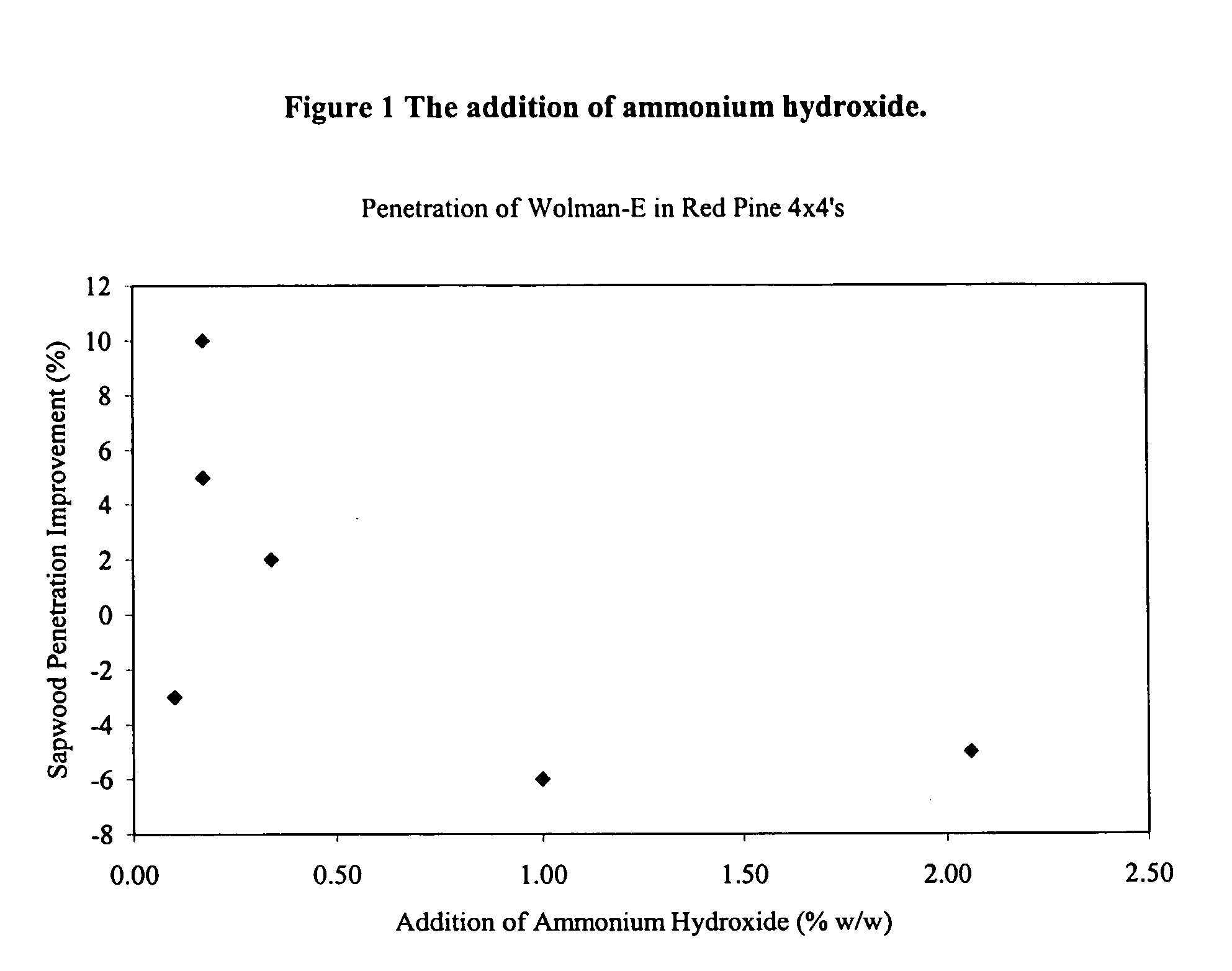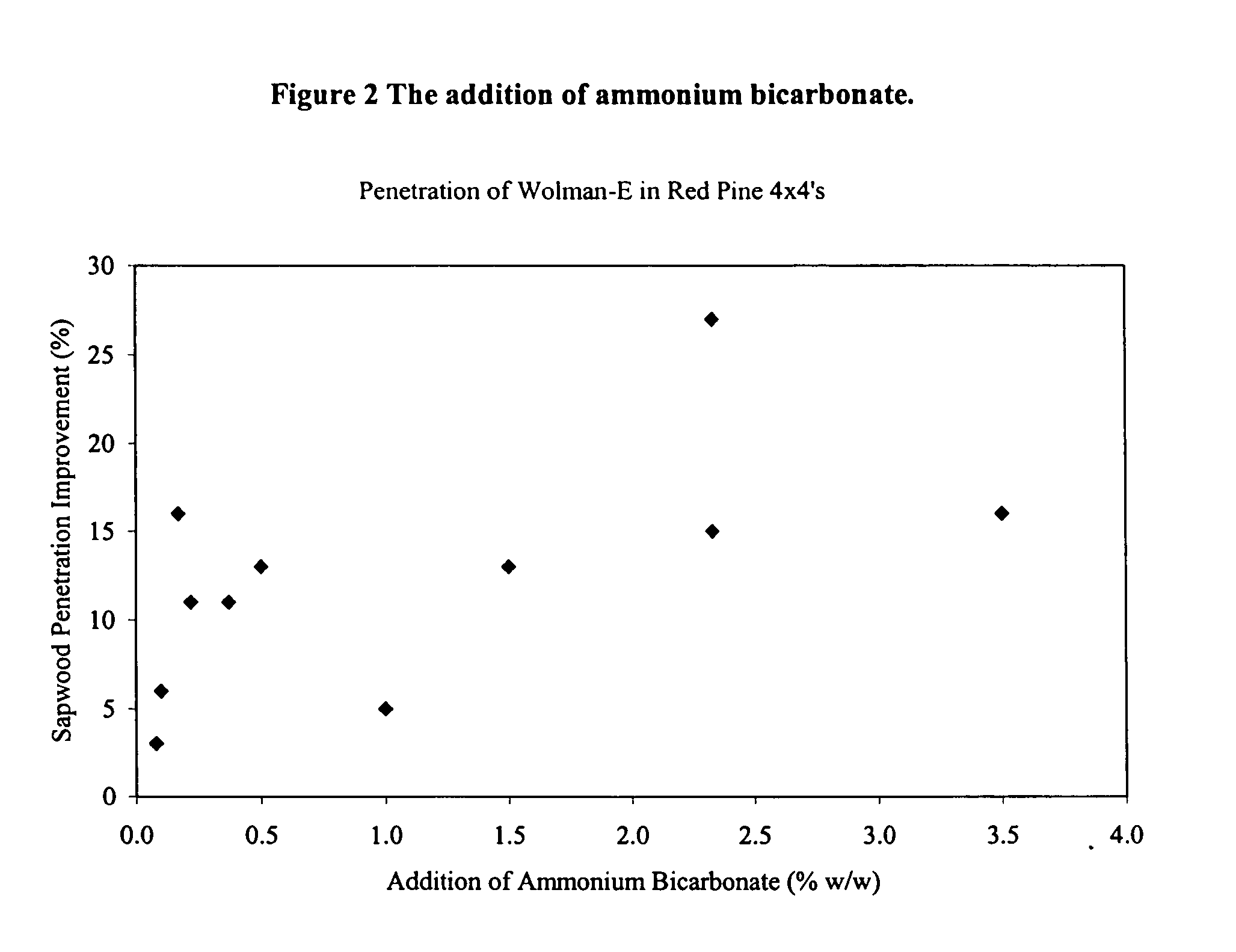Penetration improvement of copper amine solutions into dried wood by addition of carbon dioxide
a technology of copper amine and solution, applied in biocide, manufacturing tools, transportation and packaging, etc., can solve the problems of untreated wood, unfavorable wood dimensional stability, and inability to inject another liquid into solid wood containing much water, so as to improve the dimensional stability of wood, improve the value and the number of solutions, and slow the effect of hardening
- Summary
- Abstract
- Description
- Claims
- Application Information
AI Technical Summary
Benefits of technology
Problems solved by technology
Method used
Image
Examples
Embodiment Construction
[0022] While the invention will be described in connection with one or more embodiments, it will be understood that the invention is not limited to those embodiments. On the contrary, the invention includes all alternatives, modifications, and equivalents as may be included within the spirit and scope of the appended claims.
[0023] It has been found that by adding carbon dioxide to these solutions (or preservative concentrates) improved penetration exists. It is thought that the carbon dioxide acts as an acid to neutralize the hydroxides in the BCC forming copper carbonate. This lowers the pH of the treating solution. The lower pH reduces glucouronic acid dissolution and therefore reduces pore plugging and improves preservative penetration.
[0024] There are two main issues with wood preservatives such as copper amine solutions, including Wolman® E. One is penetration and the second is mold. There have been much effort and time spent to overcome these issues by using different additi...
PUM
| Property | Measurement | Unit |
|---|---|---|
| pressure | aaaaa | aaaaa |
| weight ratio | aaaaa | aaaaa |
| weight ratio | aaaaa | aaaaa |
Abstract
Description
Claims
Application Information
 Login to View More
Login to View More - R&D
- Intellectual Property
- Life Sciences
- Materials
- Tech Scout
- Unparalleled Data Quality
- Higher Quality Content
- 60% Fewer Hallucinations
Browse by: Latest US Patents, China's latest patents, Technical Efficacy Thesaurus, Application Domain, Technology Topic, Popular Technical Reports.
© 2025 PatSnap. All rights reserved.Legal|Privacy policy|Modern Slavery Act Transparency Statement|Sitemap|About US| Contact US: help@patsnap.com



